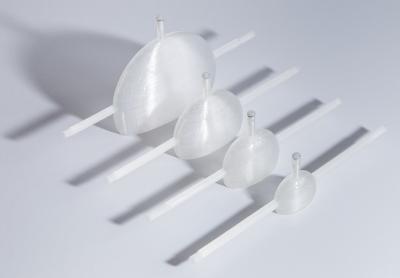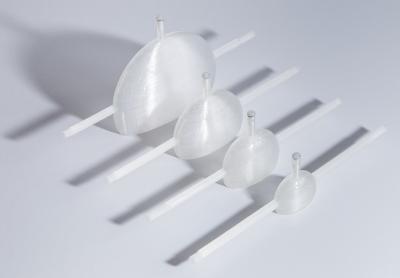
Credit: University of Würzburg
Reston, Virginia — In nuclear medicine, the goal is to keep radiation exposure at a minimum, while obtaining quality images. Optimal dosing for individual patients can be difficult to determine. That's where 3D-printed organ models of varying size and shape could be of great use.
In a study reported in the December issue of The Journal of Nuclear Medicine, researchers at the University of Würzburg in Würzburg, Germany, demonstrated that low-cost 3D printing technology can be used for clinical prototyping. Johannes Tran-Gia, PhD, the study's corresponding author, explains: "This research shows a way of producing inexpensive models of patient-specific organs/lesions for providing direct and patient-specific calibration constants. This is particularly important for imaging systems suffering from poor spatial resolution and ill-defined quantification, such as SPECT/CT."
To demonstrate the potential of 3D printing techniques for quantitative SPECT/CT imaging, kidneys–as organs-at-risk in many radionuclide therapies–were selected for the study.
A set of four one-compartment kidney dosimetry phantoms and their spherical counterparts with filling volumes between 8 mL (newborn) and 123 mL (adult) were designed based on the outer kidney dimensions provided by Medical Internal Radiation Dose (MIRD) guidelines. Based on these designs, refillable, waterproof and chemically stable models were manufactured with a fused deposition modeling 3D printer. Nuclide-dependent SPECT/CT calibration factors for technetium-99m (Tc-99m), lutetium-177 (Lu-177), and iodine-131 (I-131) were then determined to assess the accuracy of quantitative imaging for internal renal dosimetry.
Tran-Gia notes, "Although in our study the kidneys were modeled as a relatively simple one-compartment model, the study represents an important step towards a reliable determination of absorbed doses and, therefore, an individualized patient dosimetry of other critical organs in addition to kidneys."
Ultimately, affordable 3D printing techniques hold the potential for manufacturing individualized anthropomorphic phantoms in many nuclear medicine clinical applications.
###
Authors of the article "Design and Fabrication of Kidney Phantoms for Internal Radiation Dosimetry using 3D Printing Technology" include Johannes Tran-Gia, Susanne Schlögl, and Michael Lassmann, Department of Nuclear Medicine, University of Würzburg, Würzburg, Germany.
Please visit the SNMMI Media Center to view the PDF of the study, including images, and more information about molecular imaging and personalized medicine. To schedule an interview with the researchers, please contact Laurie Callahan at (703) 652-6773 or [email protected]. Current and past issues of The Journal of Nuclear Medicine can be found online at http://jnm.snmjournals.org.
About the Society of Nuclear Medicine and Molecular Imaging
The Society of Nuclear Medicine and Molecular Imaging (SNMMI) is an international scientific and medical organization dedicated to raising public awareness about nuclear medicine and molecular imaging, a vital element of today's medical practice that adds an additional dimension to diagnosis, changing the way common and devastating diseases are understood and treated and helping provide patients with the best health care possible.
SNMMI's more than 17,000 members set the standard for molecular imaging and nuclear medicine practice by creating guidelines, sharing information through journals and meetings and leading advocacy on key issues that affect molecular imaging and therapy research and practice. For more information, visit http://www.snmmi.org.
Media Contact
Laurie Callahan
[email protected]
@SNM_MI
http://www.snm.org
############
Story Source: Materials provided by Scienmag




